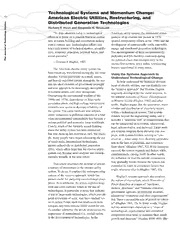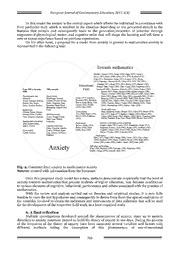
ERIC EJ1164016: From Anxiety as a Psychological and Biological Phenomenon to Mathematics Anxiety: A Theoretical Approach PDF
Preview ERIC EJ1164016: From Anxiety as a Psychological and Biological Phenomenon to Mathematics Anxiety: A Theoretical Approach
European Journal of Contemporary Education, 2017, 6(4) Copyright © 2017 by Academic Publishing House Researcher s.r.o. All rights reserved. Published in the Slovak Republic European Journal of Contemporary Education ISSN 2304-9650 E-ISSN 2305-6746 2017, 6(4): 757-774 DOI: 10.13187/ejced.2017.4.757 www.ejournal1.com WARNING! Article copyright. Copying, reproduction, distribution, republication (in whole or in part), or otherwise commercial use of the violation of the author(s) rights will be pursued on the basis of international legislation. Using the hyperlinks to the article is not considered a violation of copyright. From Anxiety as a Psychological and Biological Phenomenon to Mathematics Anxiety: A Theoretical Approach Elena Moreno-García a, Arturo García-Santillán a , *, Violetta S. Molchanova b, Némesis Larracilla-Salazar a a UCC Business School, Universidad Cristóbal Colón, Mexico b International Network Center for Fundamental and Applied Research, Russian Federation Abstract In the educational field, anxiety towards mathematics has been a recurrent theme that has been intensified with the results of the PISA test of 2012 and 2015. Since students who are anxious about mathematics tend to avoid any area related to mathematics, it leads to a decrease in the number of professionals in mathematics. However, this construct comes from a later history, which is the study of anxiety itself as a psychological and biological phenomenon. For this reason, this work carries out a theoretical revision of those seminal contributions that gave rise to the explanation from the theoretical construct of anxiety for later and in a specific way, to derive in the empirical studies of anxiety towards mathematics. Keywords: Anxiety, anxiety towards mathematics, education, mathematics. 1. Introduction A noteworthy part of the conclusions gotten from the Program for International Student Assessment (PISA) in 2012 and 2015 indicate the consequences that anxiety towards mathematics can have on students such as avoiding any related field with this matter as they can be courses, activities, workshops and situations of daily life, which in turn causes a decrease of professionals in this branch. However, this construct comes from a later history, which is the study of anxiety itself as a psychological and biological phenomenon. * Corresponding author E-mail addresses: elenam@ucc.mx (E. Moreno-García), agarcias@ucc.mx (A. García-Santillán), v.molchanova_1991@list.ru (V.S. Molchanova), larracila.n@hotmail.com (N. Larracilla-Salazar) 757 European Journal of Contemporary Education, 2017, 6(4) The essence of the term anxiety has been modified over time, taking different meanings according to the time in which it is studied as well as the search for the fulfillment of objectives of each author in their investigations. According to Mc Reynolds (1975), the first findings of the concept of anxiety arise in Ancient Greece, in the Hellenistic period (323 BC and 146 BC). Nevertheless the incorporation of the term was conceived until 1926 with Freud in his work Hemmung, Symptom und Angst, where the word Angst is translated into English using the word Anxiety, an event that has inspired the ambiguous use of the term since the twentieth century. However, the confusion was fueled by the lack of clarity between the reaction of the here and now and the propensity to anxiety, advances that will be indicated until the contributions of Cattell & Scheier (1961) and Spielberger (1966 and 1972a) through of the distinction of trait and state of anxiety. 2. Theoretical review To clarify the use and implication of the concept of anxiety, it is considered a first period from the 1920's and until the beginning of the 1960's composed of four approaches: psychodynamic and humanistic, behaviorism, experimental-motivational and personality; and a second period of the 1960s and onwards, where the contributions of feature-state theories, situationalist theories and interactive theories will enrich the personality approach in addition to introducing the cognitive-behavioral approach (Casado, 1994). The psychodynamic and humanist approach considers Freud's theories to be of great importance, which in his earlier works refers to an indifferent sign of the ego that will later become the sign of anxiety. In his first theory (1895) he presents anxiety as a reflection of the repression of sexual impulses in which he alludes to the castration complex, whereas in his second theory (1926) the anxiety will be a response to a situation of danger, generated by a past experience and introduce the terms generation of anxiety and automatic anxiety: one to describe the process of intensification of sensation in individuals and another to express the involuntary reaction to a traumatic situation so that it distinguished two types of anxiety: the realistic and the neurotic (Freud, 1895 and 1926; Snowdon, 2013). The Humanist and Existential schools, from the philosophical point of view, considered anxiety as a response of the organism to the perception of a danger to the self. Around this thought Goldstein (1939) glimpsed anxiety as a threat to the concept of the self-given the transformation it provokes in the individual; while Sullivan (1953) placed anxiety as the result of negative perceptions that an individual perceives of people who esteem and relate to experiences in their early years. Most of the authors of this current will relate the phenomenon of anxiety to the perception of a threat and/or fear of the unknown and which is subjective due to the past experiences of each individual (May, 1950; Basowitz, Persky, Korchin & Grinker, 1955; Rogers & Kinget, 1967; Epstein, 1967). The behaviorism approach, part of Watson's contributions to classical behaviorism where the term anxiety was replaced by the term fear; this approach bases its studies on the objectivity of the observation of the behavior of the individuals, reason why it considered to anxiety a transitory state influenced by the environment and by the answers learned following a traumatic event (stimulus- response); which led him to consider anxiety as a negative emotional response, based on previous studies by Pavlov (Watson & Rayner, 1920). With the contributions of Skinner (1971) appears the operant conditioning where the stimulus present in the environment produces a voluntary response that will lead to reinforce or weaken the behavior, in such a way that an aversive stimulus will produce the emotional state of the anxiety. Mowrer (1939) dismissed the idea of anxiety as an instinctive reaction, positioning it as a learned response to conditioned stimuli. However in 1960, he recognized through his bifactorial theory that the anxiety process is generated by two components: classical conditioning and operant conditioning, since one would explain the avoidance of the stimulus that generates the fear and the other would explain the conservation of the Responses subject to that fear and negative reinforcement in the behavior of the individual at the time of avoiding it. 758 European Journal of Contemporary Education, 2017, 6(4) The experimental motivational approach is based on the theories of emotion and motivation but also includes the contributions of learning theories. One of its great exponents is Hull who relates the behavioral motivation with the drive (Impulse), so that anxiety becomes classified as an impulse (Hull, 1943 and 1952). Since impulses are learned or acquired, Dollard & Miller (1950) develop the theory of impulse reduction and place anxiety as a secondary impulse that is acquired through learning. In this sense, the reinforcement (the reduction of the impulse) will have more weight than the stimulus and the response, so the degree of anxiety will be equal to the drive in the subject (Spence & Taylor, 1951; Hull, 1952; Spence, 1958). The personality approach already includes the precedents of the trait-state theories with the contributions of Cattell & Scheier (1961) in which the trait of anxiety responds to the particular arrangement in which each organism reacts anxiously, that is to say, as an inherent trait of personality; while the state of anxiety is a transitory state that is accompanied by physiological responses as a function of situational variables. For the second period in the development of the concept of anxiety delimited from the 1960s onwards, the outstanding contributions around the personality approach comprise three theories: with Spielberger (1966 and 1972a) the trait-state theories differ in conceptual form and operative the anxiety personality trait and the anxiety state, the first being a stable trait that has an individual to be prone to anxiety and the second a transient state with variation in intensity, duration and period of onset according to the subjective perception of a situation as threatening that will lead to feelings of tension and activation of the autonomic nervous system. This author also emphasizes that the state of anxiety is influenced by the level (high / low) of anxiety trait that individuals possess and that the behaviors resulting from the anxiety state tend to act as defenses to reduce the levels of anxiety, being able to consolidate with time in specific responses to similar situations. The second theory with contributions to the personality approach is the situationist, as its name implies, gives a greater weight to the characteristics of the given situations to explain the anxiety responses than to the variables of the personality since the continuity and development of behavior will be determined by the situations and learning they generate in individuals (Mischel, 1968). Finally, interactive theories offer great contributions to the personality approach, since they reconcile the importance both in the internal factors of the individual as well as in the conditions of the situation to explain the behavior, whose key is the interaction of the individual in the situation (Bowers, 1972 and 1973; Endler, 1973; Endler & Magnuson, 1974; Mischel, 1977). In this way the individual's anxiety trait added to the stressful characteristics of the situation, will result in a psychological meaning that will become a determining factor for the behavior. The study of the neurological bases of emotional behavior led several researchers to agree on a one-dimensional concept of the emotions in which behavioral, subjective and physiological indicators converged reciprocally. However, this conception of the differences present in the anxiety trait reflected in the levels of the anxiety state was not explained in all the situations that the individual experienced it. John Lacey (1967), accounts for the separation between behavioral and physiological activation indices as well as the existence of particular patterns in body responses so that not only concomitant responses are produced but also dissociated responses are independent of the different systems of activation; which means that different response patterns are associated with both situations and individuals, this is named directional fractionation. This was conclusive since previous studies on autonomic nervous system responses differed in subjects with some being more prevalent, such as elevation of heart rate, blood pressure or electrical conductance of the skin than in others (Lacey & Lacey, 1958). In addition also were found differences between the emotions; for example, anxiety states decreased gastric functions while in anger states increased (Wolf & Wolff, 1947), in the case of fear electrodermal activity and respiratory rate increased in contrast to anger (Ax, 1953). In 1968, Peter Lang developed the three-dimensional theory to explain that emotional responses are going to respond to cognition, physiology and behavior, so the phenomenon of anxiety is to be interpreted based on cognitive, physiological and motor reactions produced by both 759 European Journal of Contemporary Education, 2017, 6(4) internal and external stimulus. However, given the poor correlation between the variables will appear the need to introduce cognitive variables. In this way, the cognitive-behavioral approach is introduced that seeks to evaluate how individuals respond to external stimuli according to their cognitive processes. In this sense, these contributions will contribute to understanding how cognitive processes give rise to an anxiety reaction and how anxiety states influence behavior by modifying cognitive processes. Anxiety will be positioned as a result of the interpretation of the situation as various authors of this approach will support cognitive processes as responsible for the differentiation of emotions (Lazarus & Folkman, 1986). Schachter (1966) and Mandler (1975) will agree on the need for autonomic activation as the cognitive activity to explain the qualities of emotion. To this are added the valuation theories that indicate the quality and the intensity of the emotion through the valuation that the individuals realize through the cognitive processes (Scherer, 1999). Arnold's theory (1970) will suggest the integration of neurological and cognitive aspects to evaluate a stimulus giving shape to the emotion and the behavior. Schachter & Singer's (1962) studies will integrate somatic and peripheral physiological factors with cognitive components to explain behavior while Strongman (1978) will defend the influence of these elements without attributing them totality to the production of emotional reaction. For Mandler (1975 and 1988) an anticipated autonomic activation of the specific emotional reaction will be determined by the particular sense that an individual attributes to a situation, such as the interruption of behavior. In this sense, anxiety will deal with an irruption in behavior that evokes a state of activation (arousal) by not being able to exert control on the irruption in the behavioral sequence. Spielberger (1972a) will speak of the state of anxiety as the result of cognitive assessment of either external or internal stimuli that are stressful. Lazarus (1969) replaces the term stress anxiety, which refers to an external stimulus and a response that will include physiological changes (emotional reactions) and cognitive (cognitive assessments) in relation to conditions of the situation and the individual. For Sarason (1985), anxiety has a cognitive component composed of personal beliefs based on past experiences, self- evaluations, expectations, among other aspects that interfere with the perception and assessment of the situations faced, which increases the physiological activation. Delprato & McGlynn (1984) will understand anxiety as a product of the cognitive perception of an aversive stimulus. In this way the concept of anxiety is changing, expanding and deepening with the contributions of these six approaches, but it is still far from providing an analogous definition. In addition, the term anxiety has been exchanged for the words stress, distress, fear, and arousal, confusing the direction in expressing anxiety as an emotional state or the stimuli that produce it. In the case of the differentiation between the concept of anxiety and distress, López-Ibor (1969) expresses that the former is characterized more by psychic symptoms than by physical symptoms as in the case of anxiety. Spielberger (1972a) draws a distinction between the objective characteristics of a situation of danger and the subjective reactions added to the situation: stress is produced by objective-external, physical and psychic stimuli of a situation in which aspects of experiences come into play of the individual with similar aspects both in situations as well as in stimuli, while anxiety is the complex emotional reaction of a specific situation regardless of whether the danger is real or imagined. Thus, the state of anxiety will be the perception of a stress situation as a threat that can vary in intensity and duration according to the subjective interpretation of the individual. Spielberger (1972a) also distinguishes anxiety from fear by noting that the latter is an emotional reaction consistent with the proportion of danger, which is true and found in the external environment of the individual, whereas anxiety, on the other hand, alludes to subjective stimuli whose reaction is unreasonable in comparison with the objective danger. For Epstein (1972) the excitation (arousal) generated before a threat detonates in an anxiety reaction when the individual is incapable of channeling the emotion in a congruent action. For all of the above it is possible to understand the difficulty in conceptualizing the anxiety process, since depending on the degree of interest of the researcher, certain variables were used to provide a concept, which in turn, because there were differences between the variables used for the 760 European Journal of Contemporary Education, 2017, 6(4) study of the phenomenon of anxiety, it becomes complex to carry out a uniform concept (Spielberger, 1972a). The second edition of the Diagnostic and Statistical Manual of Mental Disorders or DSM-II (1968) describes anxiety neurosis as a disease that is accompanied by headaches, excessive worry, tension and anxiety-producing episodes. Up to this point, as Spielberger pointed out, the concept of anxiety retakes some similar characteristics and omits others among the currents studied, but it does not unify. DSM-III (1980) changed terminology neurosis (that prevailed from the first contributions of Freud) to anxiety disorders and marks a starting point for recognizing anxiety not only in adults but also in young people and infants. DSM IV (1994) lists five subtypes of phobias within the section on anxiety disorders, the majority of which are environmental or situational as the specific phobia because it responds to particular objects and situations not mentioned in the other subtypes but will evoke significant avoidance behaviors at the clinical level. The DSM V (2013), is the most updated reference within the field for the classification of mental disorders and argues that anxiety is characterized by muscle tension and alert to future hazards evoked by situations or objects in addition to sharing characteristics with fear, and the cognitive process of aversive stimulus avoidance as they are concurrent and associated in behavioral disorders. Similarly, various authors agreed that anxiety is a cognitive anticipatory reaction that evokes feelings of dislike, tension, and concern about a suggestive situation of injury or subjective danger either real or imagined for the individual and produces physiological and behavioral responses (Öhman, 1993; Marks & Neese, 1994; Sandín & Chorot, 1995; Gutiérrez, 1996; Barlow & Durand, 2001; Barlow, 2002; Mato, 2006; Toro & Ochoa, 2011). Based on the seminal theory of the anxiety construct studied over time, the conception of the anxiety construct changes from one-dimensional to multidimensional and will take into account different dimensions, from the particular trait of each individual to the characteristics of situations and the state that will generate in them based on their experiences and perceptions, producing responses of physiological, cognitive and behavioral order. 3. Anxiety in education The first investigations about the phenomenon of anxiety were focused on anxiety in general but over time their field of study has provided specific inputs to know its effect in specific situations. Such is the case of anxiety present in the academic field where, according to Marsh (1988), has a greater influence to explain school performance than anxiety in general. In this way, school failure has been related to the anxiety phenomenon that is generated in students. Brown & Gelder (1938) in their studies found that at the time of the exams, students who were inclined to remain calm had a higher yield than those who showed tension. Schultz & Heuchert (1983) assume anxiety in the educational field as a subjective response detonated by the stress produced by a school situation. Regardless of the DSM, Ernest (1991) and Echeburúa (1993) distinguish three groups of disorders to recognize the phenomenon of anxiety in infants and young people, among which the "phobic" group is particularly noteworthy since they particularly include school phobia. Also, Toro (1986) and Fauvel (1991) state that school phobia is a major disorder among young people and children. Mato (2006) considers that studies from the clinical field about anxiety in childhood and in the juvenile stage have little association with school factors that are usually determinant in these populations. Anxiety produces effects on the ability of students which makes them vulnerable in their ways of acting. Excessive anxiety can have a negative effect on the student's performance (Barker, 1984) and inhibit his ability to act (Doig, 1994). The anxious student is concerned about the activity he is developing and for understanding his mentor at the same time that he is anxious because the result to be obtained is not what is desired or because he disappoints his mentor, which makes him have doubts about his own capacity (Cohen, 1977; Kazelskis, et al. 2000; Mato, 2006). In this way, anxiety according to the situation can cause poor performance or be the answer to these or, be both; can produce tension at the time of going to the front to solve an activity and 761 European Journal of Contemporary Education, 2017, 6(4) before and / or during an examination. As the courses become more complex and according to the experiences, the students' vulnerability to anxiety may decrease or increase (Mato, 2006). 4. Anxiety towards mathematics Anxiety can cause, in individuals who experience it, periods of mental paralysis especially in activities that involve constant reflection, such is the case of learning mathematics because intense mental activity makes them prone to experience this phenomenon (Mato, 2006). The Cockcroft report (1985), a document related to the didactics of mathematics, in the 80's made known this subject and its inherent activities as producers of feelings of anxiety, fear, and defenselessness among other negative aspects. Several authors have suggested that students' reasoning may be affected by anxiety when it comes to capturing new information (Schultz & Heuchert, 1983) and problem solving (Skiba, 1990), in addition to blocking knowledge during development on a test (Fairbanks, 1992). Cubillo & Ortega (2000) consider that mathematics learning entails difficulties and blockages in students and that to this is added the perplexity in the interaction with other people when addressing their contents as well as the tools they have on hand for develop them. Therefore, it‘s not surprising that they noticed that the math subject is the main cause of academic delays. Gough (1954) was one of the first people to note this fact, since in her 25 years of experience in teaching mathematics she pointed to phobia towards mathematics or mathemaphobia, as the main cause of academic failures in students. Later, the term anxiety towards mathematics acquires great relevance with the studies of Tobías (1978), since this author seeks to exhort the mental health in the learning of the mathematics that is obtained from the will to learn and that is translated into confidence to develop mathematics as a tool in everyday life and achieve success in mathematics tasks. However, as with the construct of the concept of anxiety, the concept of anxiety towards mathematics also shows confusion, deviations, and poor agreement among authors who have studied it over time (Newstead, 1998). In this sense, some researchers speak of the topic anxiety towards mathematics with a focus on the intrinsic characteristics of the discipline, while other researchers specify their work on the type of anxiety experienced in the study of mathematics as an external factor produced by environmental factors and social. For example, in the contributions of Biggs (1959) his studies on numerical anxiety share factors of personality as well as attitudes but without distinguishing one from another; although it should be noted that the distinction between trait and anxiety state develops from the 1960's onwards with the contributions of Cattell & Scheier (1961) and Spielberger (1966 and 1972a). Studies such as those by Resnick, Viehe & Segal (1982) visualize mathematics anxiety as a topic related to self-confidence in the learning ability of mathematics, whereas in Hembree's (1990) study, it is rather a state of anxiety that occurs in situations related to the math subject. Wigfield & Meece (1988), on the other hand speak of affective-negative reactions directed at the mathematics. In the same way, there are very ambiguous or generalized definitions in this respect that lead to emphasize pathological emotional reactions to this subject and that result in inhibiting the taste for learning (Dreger & Aiken, 1957; Kogelman, Forman & Asch, 1981; Gottfried, 1985; Truttschel, 2002). Lewis (1970) links the term mathematics anxiety with the feeling of fear to a situation that is perceived with dislike and that has a focus towards the future; so May (1977) alludes to the feeling of uncertainty and defenselessness that will not only produce emotional but also somatic disturbances. For Wood (1988), anxiety towards mathematics is related to the lack of welfare before a task that is incumbent to the mathematics work. Some authors consider multidimensional to the phenomenon of anxiety towards mathematics since complies attitudinal elements, emotional and cognitive (Hart, 1989) and that may contribute to the development of attitudes towards the subject (Hauge, 1991), in addition to evoking psychophysiological reactions (Fennema & Sherman, 1976; D´Ailly & Bergering, 1992). That would be consistent with the evolution of the concept of anxiety in the second period marked after the 60's which gives rise to the interactive theories. Spielberger (1972) anxiety is the adaptive reaction of organisms to a perceived threat that is detonated as a result of a stressor and that translates into a result based on the previous experience of the individual whose stay will depend on the current rating and how is front. This way, you can 762 European Journal of Contemporary Education, 2017, 6(4) understand the mathematics anxiety, as a state and a process that is particular in each individual in its way of reacting to mathematics situations. Following the line of Spielberger, McLeod (1989) observed to mathematics anxiety as a threat to the self-esteem of individuals, so your model responds to three types of background: the environmental, the attitude and the situational. So the interaction with these factors will produce somatic responses in individuals. Richardson & Suinn (1972), mathematics anxiety consists of feelings of stress that create conflicts in the processes of reasoning and use of mathematics learning in school and in everyday life. Hadfield, Martin & Wooden (1992) studies focused on the emotional impact, i.e., they saw the mathematics anxiety as a reaction of discouragement to any mathematics activity. However, mathematics anxiety and despair are not synonyms (Tobías, 1993). It should be noted that there is some disagreement among theorists about whether mathematics anxiety has beneficial aspects for students who experience it, or if on the contrary, it is completely harmful; for example, Hebb (1955) showed that experience it can contribute in the implementation of activities related to this matter successfully although he did mentioned that if certain limit is exceeded, it produces anti-competitive effects. Satake & Amato (1995) found a positive relationship between anxiety and performance since japanese primary school, with greater anxiety towards mathematics students had a better performance in respect of which had low results; although it is worth mentioning that japanese student must meet very strict requirements to enter a prestigious secondary education by which these results can be attributed to cultural factors. Guerrero, Blanco & Castro (2001), pointed out that anxiety facilitates learning when the mathematics tasks are mechanical, simple and minor, but also specified that this result is obtained when these tasks do not threaten the self-esteem of students and they have the ability to overcome anxiety. Studies of Bush (1991) claim that students who experience this phenomenon reported instructional performance, i.e., that experience math anxiety helps them to achieve success. For Resnick et al. (1982) the decrease in anxiety in students is not associated with their success in this matter. Other studies indicate that the reduction of anxiety leads to a trend of improvement in the ratings (Chiu & Henry, 1990; Hembree, 1990; Meece, Wigfield & Eccles, 1990; Leder, 1992). Several authors have agreed that anxiety towards mathematics affects negatively the students since its capacity is affected, or in the worst cases, disabled (Aiken, 1970 and 1976; Lazarus, 1974; Fennema, 1977; Fox, 1977; Betz, 1978). Hannula (2001) points out that interact with anxious students is more complex compared to students who do not have anxiety, since the first tend to predispose negatively towards mathematics learning what affects their cognitive processes. Given that fear affects the processes of conceptual thinking, anxiety towards mathematics can block the logical reasoning regardless of the potential that students have for this subject (Fairbanks, 1992), which leads students to memorize mathematics knowledge rather than to understand them (Wells, 1994; Puteh, 2002). According to Auzmendi (1992) the level of anxiety towards mathematics varies among individuals since it will depend on the level of proficiency of each student and the particular intensity with which it is perceived, what will inhibit its ability to integrate new knowledge and created antipathy towards the matter. Mathematic anxiety can affect individuals' ability to perform mathematics problems (Wine, 1980; Hembree, 1990; Ashcraft & Kirk 2001), may inhibit the ability to acquire complex learning (Guerrero, et al., 2001), can cause physiological reactions such as sweating, tremors, headaches, stomach discomfort and making students feel sick (Hodges, 1983; Hoyles, 1991), may cause the student to miss classes (Meece et al., 1990), as well as to avoid math courses in general (Armstrong, 1985). In addition, you can also inhibit the efficiency of the efforts in the mathematics field (Skemp, 1986), difficulties for the taking and evaluation of decisions (Echeburúa, 1993) and cause a psychological habit between the subject and failure (Morris, 1991). Experiencing anxiety can be as a vicious cycle: to be present, the trend in the results of the tasks to be carried out will point to a poor performance and these failures in the performance of tasks will result in producing more anxiety (Biggs, 1985; Mato, 2006); and usually, the anxiety is experienced by past experiences (Tobías, 1987). 763 European Journal of Contemporary Education, 2017, 6(4) Mato (2006) points out the existence of two theoretical models of great influence in the study of the anxiety towards mathematics, one is the theoretical model of interference based on the works of Mandler & Sarason (1952), Liebert & Morris (1967) and Wine (1971) and the theoretical model of deficit represented by the work of Tobías (1985). The first suggests that a high level of mathematics anxiety (produced as a result of past experiences) impact on success in a negative way while the second is developed by the deficiency of the students at the time to carry out their learning and mathematics activities, which produces the phenomenon of anxiety. Anxiety towards mathematics is a phenomenon that doesn’t discriminate age, since it is present both in children, as young people and adults (Hoyles, 1975; Tobías, 1980; Quilter & Harper, 1988; Thomas & Costello, 1988). However, studies of McLeod (1993) indicate that it arises during primary education, issue that could arise from that stage of life onwards and by all of it. Bornas (1996) expressed with mathematics anxiety children also experience other cognitive distortions as an excessive concern, what back them prone to present thoughts linked to his intellectual limitations and its failures. Karp (1991) as well as McLeod, says that primary education is critical to consolidate or lose confidence in math skills, question leading to fixations on the subject will be more developed during the secondary education (Betz, 1978; Tobías, 1980; Cockcroft, 1982; Frary & Ling, 1983). In this respect, Norwood (1994) found in his studies that 68% of high school students experience high levels of anxiety towards mathematics. Also at this stage the mathematics success begins to decline (Brush, 1985; Wigfield & Meece, 1988; Hembree, 1990). On the other hand, some researchers expressed a marked difference in the intensity of the phenomenon in students according to their gender, being affected mainly the female gender (Sells, 1973; Ernest, 1976; Hilton, 1980). Stent (1977) and Brown & Gray (1992) point out that up to 12 years, the difference is not visible. Halpern (1986) does not specify the age but says that adolescence is when this difference becomes observable. Tobías (1980) also agrees to that the intensity of the anxiety towards mathematics is higher in women than in men. Some studies argue the existence of a biological basis (Benbow & Stanley, 1980; Halpern, 1986), as it is the theory of the cerebral laterality, which refers to both psychological and neuropsychological functioning differences between men and women. Other works have been also reported gender differences in affection and attitude toward the subject of Mathematics (Fox, 1977; Reyes, 1984; Stage, Kreinberg, Eccles & Becker, 1985; Meyer & Fennema, 1988). Otherwise from other studies, such as those of Frank & Rickard (1988) which accuse the lack of prior knowledge as proof of the experienced anxiety. The previous argument is validated by studies like the of Betz (1978), since with three different samples see anxiety highest in the older women with respect to men, women in which his mathematics background is less since they have left the mathematics field for a longer time, factor contributing to their higher level of anxiety. Brush (1978) also found that women with the same level of mathematics instruction than men, had the same level of anxiety that they and no more. The Autonomous Learning Behavior model (ALB) of Fennema & Peterson (1985) suggests students independent learning shaped by internal and external influences to determine gender differences, i.e., that the experiences of independent participation will be influenced by the appreciation of themselves as well as matter and social stereotypes and expectations of others. The success of the autonomous student strengthens your inner belief system that consists of self- confidence, the perception of the mathematics knowledge as useful for their life as well as the independence between the math and their sexual role. Shibley, Fennema, Ryan, Frost & Hopp (1990) in his study found that women tend to have more negative attitudes towards mathematics than men; one of its conclusions sheds the stereotype of math as a masculine domain which may threaten the self-esteem of women to carry out the study of mathematics. In this same regard Tobías (1978) and Mato (2006), reflect that social expectations can contribute to see math more as a male field, what you see reflected in the beliefs of women feel with disabilities mathematics field; alternatively, there are wicked opportunities to engage in this field (Tobías, 1976). However, all the authors analyzed agree on giving greater importance to the previous mathematics background as the cause of the anxiety towards mathematics than to gender. On the other hand, cognitive processes have a great influence on learning and mathematics performance, regardless of the previous background of students (Llabre, Suárez, 1985). Gómez- 764 European Journal of Contemporary Education, 2017, 6(4) Chacón (2000) confirms the existence of a significant relationship between cognition and affectivity, which divides the importance between the process of valuation (culture) and the cognitive process (reasoning). He discovers that mathematics learning is seen as constructing the students' social identity, that is, as the acquisition not only of knowledge (culture) but also as belonging to a group (social process). While several authors place the anxiety towards mathematics as inherent in individuals who fail in this area, authors like Ashcraft, Kirk & Hopko (1998), recognize its existence also in the successful students, which would lead to more trouble in respect of the selection of a professional career. Therefore, while some students hate successful results in that subject does not mean that they do not seek to avoid it (Onwuegbuzie, 2003; Muñoz & Mato, 2008). Now, the contradictory findings of these studies have kept the interest of researchers (Kirkland, 1971); problems that can be attributed to the differences between trait anxiety and anxiety are not taken into account (Sieber, 1969). When students blocked it and allow the feeling of anxiety to exceed them, these difficulties are translated to problems presented in their daily lives for the rest of their lives (Mato, 2006). Initially, the studies carried out on the topic of anxiety towards mathematics focused to a public university or adult although studies such as McLeod (1993) have made the observation that both the attitudes and emotional reactions to the matter of mathematics can be formed at an early stage (between 9 and 11 years old). Negative attitudes towards mathematics once formed hard are modified and persist in the adult stage, generating adverse consequences on people who have anxiety. Within the consequences that afflict those who suffer from anxiety towards mathematics are interruption of conceptual thinking and processes of memory, under performance, the avoidance of the subject and the abandonment in the choice of careers related to this area coupled with negative feelings of guilt and shame (Brush, 1978; Burton, 1979; Hendel, 1980; Resnick, et al. 1982; Armstrong, 1985; Preston, 1987; Seaman, 1999; Puteh, 2002; Mato, 2006). This emotional reaction is strengthened in the classrooms and is reinforced with each error that students have in the exercises, their learning and exams; and therefore relate inversely with positive attitudes towards this matter. While it is true that anxiety can assimilate a mechanical learning, it has a blocking effect of complex learning (Gairín, 1990). 5. Study model In this way the revised theoretical contributions allow you to raise a causal model of study based on theoretical and empirical reality of anxiety, as a construct: INDIVIDUAL (Feature) ANXIETY EXPERIENCE As a detonator of SITUATIÓN (Learning) (Stimulus) BEHAVIOR (Physiological, motor and cognitive response) Fig. 1. Construct of anxiety Source: Created with information from the literature 765 European Journal of Contemporary Education, 2017, 6(4) In this model the anxiety is the central aspect which affects the individual in accordance with their particular trait, which is involved in the situation depending on the perceived stimuli to the features that contain and subsequently leads to the generation/evocation of behavior through responses of physiological, motor, and cognitive order that will shape the learning and will form a new or repeat experience based on previous experiences. On the other hand, a proposal for a model from anxiety in general to mathematics anxiety is represented in the following way: Fig. 2. Construct from anxiety to mathematics anxiety Source: created with information from the literature Once this proposed study model has arisen, seeks to demonstrate empirically that the level of anxiety towards mathematics that present students of higher education, may become conditioned to various elements of cognitive, behavioral, performance and others associated with the practice of mathematics. With the review and analysis carried out on theories and empirical studies, it is now fully feasible to raise the test hypotheses and consequently to derive from them the operationalization of the variables involved to obtain the indicators and instruments of data collection that will be used for the development of the respective field work, in a later empirical study. 6. A final reflection Multiple investigations developed around the phenomenon of anxiety, since up to anxiety disorders to anxiety neuroses, passed to build the theory of anxiety in our days. During the process of the formation of the theory of anxiety have been measured several variables and factors with different methods taking the conception of this phenomenon of one-dimensional 766
The list of books you might like

The Silent Patient

The Sweetest Oblivion (Made Book 1)

The Subtle Art of Not Giving a F*ck

A Thousand Boy Kisses
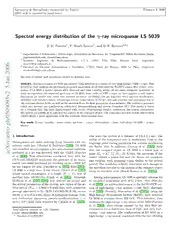
Spectral energy distribution of the gamma-ray microquasar LS 5039
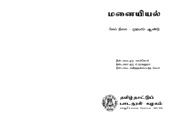
Home Science (Std11 - Tamil Medium)
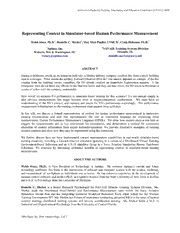
DTIC ADA473946: Representing Context in Simulator-based Human Performance Measurement
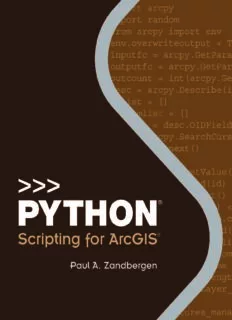
Python Scripting for ArcGIS
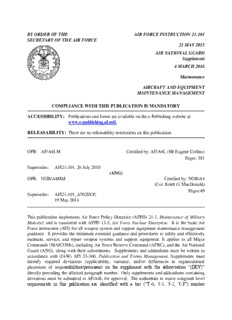
BY ORDER OF THE SECRETARY OF THE AIR FORCE AIR FORCE INSTRUCTION 21-101 21 ...
![Report of the fifth session of the Committee on aquaculture [elektronische middelen] book image](https://cdn.pdfdrive.to/media/content/thumbnails/61c9c127-6885-4257-83d0-ade79992e930.webp)
Report of the fifth session of the Committee on aquaculture [elektronische middelen]
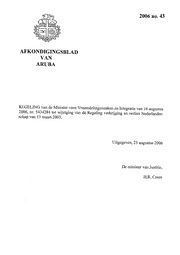
Afkondigingsblad van Aruba 2006 no. 43
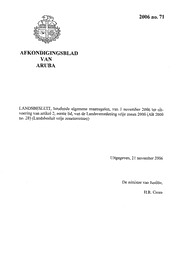
Afkondigingsblad van Aruba 2006 no. 71
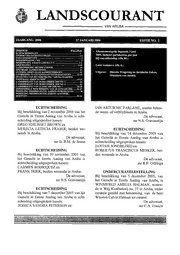
Landscourant van Aruba 2006, no. 02
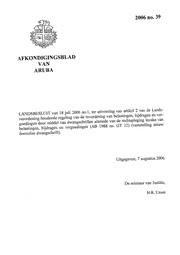
Afkondigingsblad van Aruba 2006 no. 39
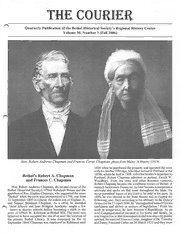
The Courier, Vol. 30, No. 3
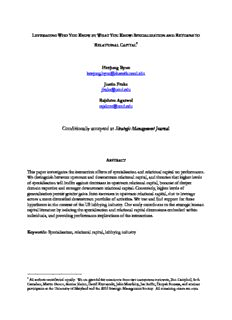
Byun Frake Agarwal 2017
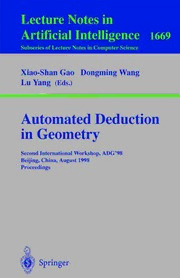
Automated deduction in geometry : Second International Workshop, ADG '98, Beijing, China, August 1998 : proceedings

CAUT Bulletin April 2012 (Volume 59, Number 4)

SPRING 2006 LYME ART ASSOCIATION NEWS & EVENTS

Attitudes Towards the Use of Violence and Partner Directed Aggression

The Story Girl by L. M. Montgomery
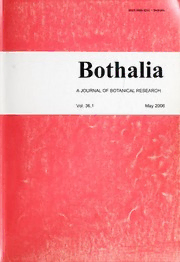
Bothalia Volume 36

